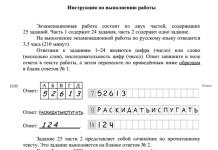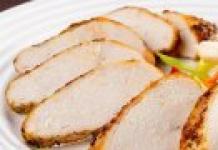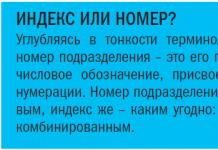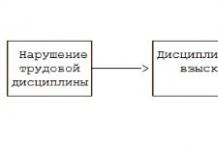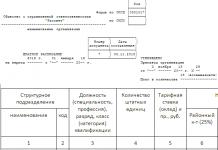Balda is a silly name for a great perch lure. They catch her in open water and from ice. You can make it at home and many anglers do this. Balda consists of a body-load and, as a rule, two hooks hanging freely on the sides of the body on a loop of fishing line or on wire shackles soldered to the load. Ordinary olive weights can serve as blanks for bodies.
The lower part of the olive is cut off with a knife and rounded off with a file to give the body-load a teardrop shape.

Although the load of the bulldozer can also be made from other metals: tungsten, bronze, copper, brass, etc., but at home, the processing of such materials is difficult and requires additional equipment and appropriate skills, and not everyone has them. Lead, in this regard, is the most “democratic” metal.
In the upper part of the workpiece, we either drill a hole with a thin drill, or solder the ring.

 two hooks are shown as an example. The left one has a regular ring, and the one on the right has an enlarged one. They are on sale, but not everywhere. With large rings, hooks are preferable.
two hooks are shown as an example. The left one has a regular ring, and the one on the right has an enlarged one. They are on sale, but not everywhere. With large rings, hooks are preferable.
If a ring for tying a fishing line is soldered on top, then it is better to fasten the hooks on the sides on soldered wire ears.

The final touch is to decorate the hooks with beautiful silicone cambric. And we collect gear.
Two options for making a catchy perch bait with your own hands - "Balda"

The photo on the left shows a bulldozer with a drilled body. The hooks hang on the sides on a loop of fishing line tied with a non-tightening knot. On the right is a balda with hooks hanging freely on wire loops. The fishing line is tied to such a bulldozer with any fishing knot.
The advantages of the bulldozer in the photo on the left are as follows. Ease of manufacture. The time is spent only 10 minutes. Possibility to fish on a muddy bottom by adjusting the length of the loop. The load may fall into the silt, and the hooks will remain on top. The disadvantage is that with a sharp swing, the hooks can cling to each other.
Balda in the photo on the right is devoid of this shortcoming. But this lure is more difficult to make and very difficult to fish on the muddy bottom. Because it will sink in the mud along with the hooks. And it can be difficult to determine exactly the moment the bulldozer touches the viscous bottom because of its design. It sticks vertically into the bottom, and the nod does not win back the first touch of the silt with the bulldozer and “shows the bottom” only when the bulldozer has already gone deep into the mud.
During the spring melting of ice, the activity of predatory and non-predatory fish noticeably increases. This affects the catchability of no-bait lures. I especially want to highlight the well-known, usually. In early spring, such equipment catches almost any fish.
With its high catchability, this type of winder does not always work well. Some anglers consider this tackle uninteresting and primitive. Like, you just need to sit, knock the bait on the bottom, and the fish will bite by itself. Probably from the outside it looks something like this, but only for people who are not familiar with such tackle closely. Especially when it comes to small varieties of bullshit. The small bald lure looks very similar to the larger one. However, in reality they work as fundamentally different baits, this is expressed in the following ways:
- According to most fishing enthusiasts, bulldozer fishing is only about hitting the bottom. The heavy body of the bait raises small clouds of turbidity, attracting curious fish. Hooks with beads freely moving on hinges provoke a bite, probably resembling the legs of a beetle.
- This point of view definitely has the right to life, however, there are other options for using the bait. In my understanding, the microbald successfully imitates a water bug or larva, which is a natural food for fish. Outwardly, it can be compared with such as a goat, a devil, a witch, etc. The mobility of the hooks makes it look like a floating insect that moves up, pushing off with its paws.
- Having picked up the movements and painted in dark, natural tones, you can catch any fish on the bastard. Unlike a large bulldozer, its small version is caught not only by knocking on the bottom. Quite good fish bite on it and in the water column.
Tackle device

The coloring of this mormyshka has two universal options, these are black and dark gray colors. These colors work a little more stable than others. Hook paws hooks can be made almost anything. They use both multi-colored hooks of different sizes and shapes, as well as cambric or washers.
It responds a little better to the lure of golden or copper colors with bright beads on the hooks. and prefer red and white colors. Hooks set the length equal to the length of the body of the lure. From the color of hooks numbers 12-18, white, golden, black or red are in use. Hooks of different colors should not be placed, this can alert the fish and worsen the bite.
Jewelry on hooks can be soft or hard, movable or fixed. The materials used are foam rubber, beads, silicone, thread, pieces of rubber. The size of this decoration should be such that about a third of the hook is closed.
Bald bait mounting
Bald tackle for winter fishing is easy to assemble both at home and at the fishing spot.
First, a hook is put on the fishing line, then it is pushed through the body of the mormyshka and the second hook. Next, we make a small loop, about twice as large as the length of the bait. So, we get a ready-made bulldozer tackle, with hook-paws freely moving on the fishing line.
On a note! Unlike the large bulldozer, the body of the microbalda must be strictly symmetrical. This is necessary to perform high-quality animation. Otherwise, the bulldozer, when moving up, may at times deviate slightly from the vertical axis. For some reason, especially under ice, fish like to lift their food object in a straight line. This fact is confirmed by winter fishing for the devil and many other non-attached mormyshkas.
For the microbald, relatively thin diameters of the lines should be used, with a diameter of 0.1-0.12 mm. The holes in the body of the bulldozer must be carefully sanded, otherwise the fishing line can quickly fray.
Of course, you can tie the bulldozer in other ways, for example, a loop in a loop. This allows you to change the bait even faster if necessary, but adds unnecessary elements. With a weak bite, it is better to refuse this option.
A nod, as in the case of other mormyshkas, is placed suitable for the weight of the bait. If the main object of fishing is white fish, it is better to take an elongated nod that allows you to make smooth movements. Under the perch, it is better to adapt a shortened nod, the game, in this case, will turn out to be more high-frequency.
Posting a microbald
Miniature lures are the easiest to master. It is from them that it is better to master fishing on a microbald. Tackle wiring has a lot in common with different types of jig, so these skills will definitely come in handy. They begin to lead the bait from the very edge of the hole, slowly lowering it to the bottom.
On a note! Take short breaks from time to time. At this time, the legs are still moving by inertia until they completely calm down. It happens that the fish pursues the mormyshka, moving in the same direction and pace, not daring to bite. Such a pause often provokes passive fish into active actions. Even if a full-fledged bite does not follow, a nod can convey a slight poke. Thus, the fish will give out its presence and it will certainly be possible to persuade it.
If during the lowering with pauses there was no bite, we try to use the tackle as an ordinary bulldozer, by tapping on the bottom. Of course, this method works well and attracts fish in the bottom water layer.
After the “swarming of the bug in the ground”, we begin a slow ascent. When lifting, we connect the paws immediately after separation from the bottom. We lead the bulldozer slowly, with buildup and pauses after a certain distance. In this phase, bites also most often occur precisely during a stop in movement. With any suspicious failure in the movements of the nod, a sweep should be done. Bites are sure, but can be barely noticeable. With an idle stroke of the rod, it makes sense to return the bait to its original position and continue the game.
Already at the beginning of spring, the fish wakes up and begins to move more. Moreover, it can be located in any layers of water, even in deep areas. It is at this time, in my opinion, that the catchability of the microbald sharply increases. After all, when posting, it goes a long way, collecting fish from different horizons.
Where is the best place to use bulldozer tackle

The depth at the place of fishing can be any, but not everywhere the fish responds to the bulldozer in the same way. I have fished this lure from 40 centimeters under the ice. Tried to catch and at depths up to 10 meters. Bites are everywhere, but the tackle works out most stably at a depth of 1.5-2 meters. On overgrown gently sloping banks, you need to find areas where vegetation borders on access to the depths. This is where most of the hits happen. Probably, the fish are simply more accustomed to seeing a floundering imitation of an insect in the grass than in a clean place. It is there that most of the larvae and bugs live, which are successfully imitated by a small bastard fishing tackle.
It has been noticed that the bulldozer, like the devil or other non-attached mormyshkas, works well on abandoned holes. This happens even on those holes where there was not a single bite on the bloodworm. There seemed to be no fish at all. The use of a small bulldozer in such places, if it does not allow you to catch a hole, then helps to find fish. It seems that the fish, although it eats bloodworms often, but not always. From time to time she switches to another food.
Fishing in a snag
Quite catchy places may be flooded tree branches or snags. A lot of natural live food is also collected here and the bulldozer bait has a good chance of taking a bite. Compared to other non-attached tackle with rigidly fixed hooks, the bastard passes obstacles more easily. Free-moving hooks, of course, also cling, but less often. In addition, the heavy body of the bait sometimes allows you to "beat off" a slightly hooked hook. Of course, it is not necessary to climb into the thick of an impenetrable snag. As in the case of coastal grass, here you need to try to find the border.
Experiments with smell
If the paws-hooks of the bulldozer are decorated with pieces of foam rubber or thread, they can be sprinkled with an attractant. It has been observed that adding scent can actually improve the bite. More than others, white fish begins to show interest, especially bream, roach and even crucian carp. Perch can be lured by the smell of shrimp, worm or fish.
Advice. Feel free to experiment with fragrances. It makes no sense to dip all the bait into concentrated flavoring. The sense of smell of the same perch is quite powerful and too strong a smell can alert the fish.
Conclusion
Lures such as balda, and especially its small forms, are a gift for anglers who love to experiment. Their use will certainly add variety to winter fishing. But in the wilderness, the effectiveness of the microbald is greatly reduced. During this period, it is better to use it as an ordinary bulldozer just by knocking on the bottom.
Surely you have at least briefly heard about tackle with such a catchy name "balda", even if you are a novice angler. This tackle is very popular, effective and also versatile. Do not forget that it is easy to make it with your own hands and there is no point in buying, and it is much more pleasant to catch a large perch with the fruit of your labors.
Balda was nicknamed tackle, which was made from a lead sinker and 2 hooks on a fishing line. Colored beads or colored cambric are put on the hook, remember the revolver.
- The principle of bald fishing:
- The bait falls to the bottom of the reservoir and taps on the bottom several times;
- After that, a cloudy cloud rises and, in conjunction with the sounds, the “mothless” attracts fish;
- The first one basically comes up to the perch and grabs the bait;
- It was invented for winter fishing, but it is also successfully practiced in other seasons and it is taken not only by perch, but also by roach, bream, chub and other peaceful and predatory fish.
Features of catching fish on the bastard
Since the “balda” is a winter bait, fishing for it should be carried out from the ice. When playing with the bait, you should not pull the bait sharply; play the bulldozer gently and smoothly.
Observe the interval between lures when fishing on a bulldozer, since this tackle raises turbidity, 2-3 "balds" in the immediate vicinity will not give any effect, although the water is clear in winter.
The summer version of bald fishing provides for the presence of a boat. You need to play with the bait in almost the same way, only lift from the bottom with sharper movements to a distance of about 25 cm. In summer, the fish are more active and will gladly pounce on your bait.
Do-it-yourself step-by-step instructions for making "bastards"
To make a bald with our own hands, we need:
- Sinker;
- 2 hooks with a straight and long forearm (other hooks in the photo);
- Red and black cambrics (these colors showed themselves best) or red and black beads;
- A piece of fishing line or main line;
Starting to cook our "bald" with the fact that we put cambric on hooks. First we put in red, then black, imitating bloodworms, if you do with beads, follow the same order.
Take cambrics not too big so that they do not fly off the hook freely.
It is also advisable to take a hook with a straight forearm, there are other hooks in the photo, because. experimented with these, straight shank hooks worked better.

Then we take the hook and put the fishing line into it, then we put it through the sinker and the hook. 1 hook must be put on through the ring from the side of the sting, the second vice versa.
By the way, if you cast the sinker yourself, it is better to sharpen it, remove all the burrs so that they do not cut the fishing line, although the metal is soft, it is still better to insure yourself. I just sharpened it and glued the cambric on the epoxy glue.
Sinkers choose also not very large, depending on the reservoir. I have a huge sinker for 50 g, again I experimented.

Everything is almost ready, it remains only to make a knot at a distance from the sinker and hooks, about 4-5 cm. The knot is not visible in the photo, unfortunately it was cut off.

Well, in general, I told you in detail the main algorithm by which they make the "balda". Experiment more with fishing tackle and you will definitely make the perfect “balda” for yourself.
Dried perch is a very tasty fish and an unsurpassed treat for beer. Small specimens that can be caught in winter are best suited for this. Let's consider the features of catching perch in the winter on the bald, as well as how to make this tackle with your own hands. This method of fishing has been known for a long time, and was used by our great-grandfathers.
Tackle device
Balda has an extremely simple design. Its elements:
- Sinker cylindrical, cone-shaped or drop-shaped;
- Two hooks with a long shank, planted symmetrically;
- Bright beads and pieces of colored cambric.
 If a suitable sinker is not available, it can be cast from lead yourself. The shape is best made from clay or sand. After the metal has cooled, using an electric drill, a hole should be made in the upper part with a diameter of no more than 2 mm. To prevent chafing of the fishing line, chamfers should be made on both sides of the hole, for which a larger diameter drill can be used.
If a suitable sinker is not available, it can be cast from lead yourself. The shape is best made from clay or sand. After the metal has cooled, using an electric drill, a hole should be made in the upper part with a diameter of no more than 2 mm. To prevent chafing of the fishing line, chamfers should be made on both sides of the hole, for which a larger diameter drill can be used.
In order to attract perch during winter fishing on the bulldozer, some fishermen collect the so-called rattle. To do this, a hole is made in the lower part of the sinker, small balls from the bearing are placed there. After that, the hole is sealed. This trick helps to stir up the fish, which in most cases are very lethargic in winter and bite reluctantly even with the best bait.
It is recommended to paint the sinker in red or black. The fishing line should be threaded through the hooks and sinker so that the hooks fit symmetrically on both sides. Before this operation, bright beads and colored cambric are hung on them. The loop is recommended to be made at a distance of 5-10 cm from the sinker. This design allows the weight and hooks to move along the line.
During winter fishing, a short rod with a hard tip is used on the bald, thanks to which the fisherman can play with bait, attracting prey. To use tackle at different depths, the rod is equipped with a small plastic reel. Monofilament with a diameter of no more than 20 mm is usually used as a fishing line. When fishing on a bulldozer in winter, single hooks of a small size are used. If you are going to fish for larger fish such as zander, you should take large double hooks.
Where and when to fish for perch
Perch lives in calm waters without a fast current. It should be borne in mind that this fish never stays in one place for a long time, moving around a pond or lake in search of food. Most likely locations:
- Accumulation of snags;
- Thickets of reeds or reeds;
- Places with an abundance of algae;
- Small holes or pools.
The optimal time for perch fishing is from 6 am to 9 am in the morning and from 4 pm to 7 pm in the evening. You can determine the presence of a perch by the seething of water caused by the fact that this predator is chasing fry. The least activity of perch is observed in January, but with the beginning of ice melting it resumes. In order to find the location of a flock of perch, the following nuances should be taken into account:
- In a small pond, holes are drilled from the shore with an accompanying depth measurement;
- On the lake, holes can be made in any direction at a distance of no more than 10 m from one another;
- For a normal catch, 10 holes are enough.
How to catch on the bulldozer
 Like any fishing tackle, the bulldozer requires skillful handling. First of all, you should lower the sinker with hooks to the very bottom and, playing with it, raise the muddy dregs to attract the attention of the fish. On a sandy bottom, this technique is just as effective. In areas with algae-covered bottom, the method does not work.
Like any fishing tackle, the bulldozer requires skillful handling. First of all, you should lower the sinker with hooks to the very bottom and, playing with it, raise the muddy dregs to attract the attention of the fish. On a sandy bottom, this technique is just as effective. In areas with algae-covered bottom, the method does not work.
When the rod is sharply raised, the hooks are pressed against the sinker, and when lowered, they are in “free floating”. It is at this moment that the most active perch bite is observed. In order to make the sinker's behavior look plausible from the point of view of the fish, the rod should be raised and lowered at different intervals.
If you have completed all these steps, but no fish are observed, you should change the hole or move to another place. If the fish does not take the bait, you can move the rod slightly so that the sinker remains motionless and the hooks attract its attention.
Here are some common mistakes which allow almost all novice winter fishing enthusiasts:

If you do everything right, a curious perch is sure to take the bait. Pulling it out is already a matter of technology. Keep in mind that a large specimen may need to be worn out first by playing with it for some time.
summer fishing
 It is worth noting that the bastard for fishing can be used in the summer. In addition to perch, in this way it is possible to catch ide, silver bream, roach or rudd.
It is worth noting that the bastard for fishing can be used in the summer. In addition to perch, in this way it is possible to catch ide, silver bream, roach or rudd.
For this purpose, anglers use a light telescopic rod no more than 5 m long, equipped with a wire reel. You can fish both from the shore and from a boat. Such tackle allows you to catch small windows of aquatic vegetation, which simply cannot be reached in any other way. The float, as in the case of the winter version of the bulldozer, is not used . To determine bite you can use a sensitive top from the feeder.
Like any other way of fishing, bald fishing requires patience and perseverance. Your efforts will be rewarded a hundredfold in the form of several kilograms of excellent fish.
 Bait "balda" homemade
Bait "balda" homemade
Winter fishing bait "balda" is something between and.
It is believed that the Balda was invented by the Ural fishermen, especially for catching fish in the winter without a nozzle, so this tackle is often called the "Ural Balda".
Balda making
The design of the "bastard" fishing tackle is extremely simple, and at the same time, very effective. It is especially good to fish for the bulldozer, when fishing for perch. Tapping this bait on the bottom, and its movable hooks, imitating bloodworm larvae, do not leave a curious perch indifferent. Although, conventionally peaceful fish can be tempted by a bulldozer, - bream, bream And roach.
It is very easy to make a "bald". Initially, a balda was a winter vertical baubles with one soldered hook, to which, with the help of a loop, two more hooks clung.
Over time, the design of this gear has undergone many changes, and at the moment, the number of improvements and modifications to this seemingly elementary gear can no longer be counted.
Usually, the bald is made from lead and lead-tin alloys, but the bald is also made from brass, bronze and copper, turning blanks on a lathe.
How to make a catchy bastard?
Balda making - VIDEO
Making a ball is extremely easy! What you need:
- Hooks. Two hooks with ears - for one bait;
- Sinker. For the manufacture of bulldozers, as a basis, you can use ready-made store sinkers;
- Paint or permanent marker. To paint the bald you will need a waterproof varnish, paint, or marker, but it is not necessary to paint the bald;
- Beads and tubes. To decorate the hooks of the bulldozer, beads and beads from the jewelry department or colored plastic tubes (insulation from wires) are suitable;
- Fishing line. For connecting all elements of the bait.
Two more ways to make a bald:
Bald fishing
Technique for catching fish, similar to glitter. The bait is lifted from the bottom, then released into free fall so that the bulldozer “hit” the bottom. A cloud of turbidity and the sound of touching the bottom attract fish from afar, and moving hooks provoke them to bite.






